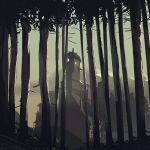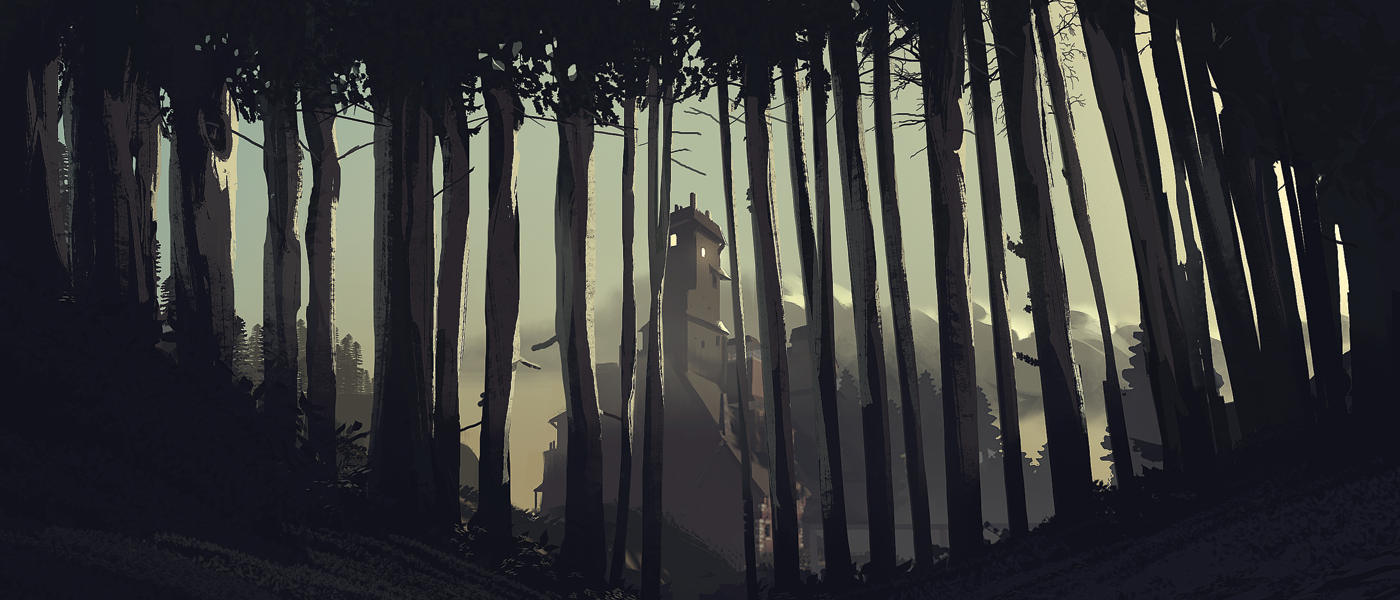What Remains Of Edith Finch will not be for everyone – that much I can say with confidence. It’s a strange little indie project from Giant Sparrow, a California based indie developer who previously put out another little gem called The Unfinished Swan. It’s an experience that many wouldn’t really call ‘traditional’; a game that many would be quick to label a “walking simulator”; an interactive story that slowly unravels as you progress, though with notably less interactivity than its contemporaries. Most importantly, Edith Finch is an experience that embodies a tone and atmosphere like no other, which makes it something truly special.
What Remains Of Edith Finch takes place in the Finch family home, which is situated on a rocky cliffside in Washington. Seemingly defying all laws of physics, the house is strangely shaped and packed to the brim with heirlooms, stories, and furniture, having been abandoned several years prior. You play as Edith, who returns to the home to learn about her family’s troubled past, as well as herself. You’ll slowly learn about each member of the Finch family, and how they met their untimely demise.
 The crux of the gameplay is simply exploring the house, soaking up the atmosphere and “experiencing” thirteen or so story vignettes about each member of the Finch family. Each one is uniquely designed to evoke the themes and motifs that best match up to that family member’s own interests and final moments before their death. The result is something truly unique, where the morbidity of death is well juxtaposed against fantastical or colourful imagery. Despite this, there were times in Edith Finch where I felt like the symbolism was a little bit too on-the-nose.
The crux of the gameplay is simply exploring the house, soaking up the atmosphere and “experiencing” thirteen or so story vignettes about each member of the Finch family. Each one is uniquely designed to evoke the themes and motifs that best match up to that family member’s own interests and final moments before their death. The result is something truly unique, where the morbidity of death is well juxtaposed against fantastical or colourful imagery. Despite this, there were times in Edith Finch where I felt like the symbolism was a little bit too on-the-nose.
The actual gameplay never really elevates much above just walking through the environment, examining certain objects, listening to dialogue, and repeating. When you do take control, it’s usually in a weird or unusual way, such as commanding bath toys, flying a gravity defying kite, or beating up assailants with a crutch. It’s nothing that’s ever too demanding, meaning that almost anyone could play and complete the game, but it still feels more interactive than previous games of this ilk such as Dear Esther and Everybody’s Gone To The Rapture.
A particularly annoying habit of Edith Finch is the game’s tendency to interrupt your exploration. You’ll be exploring the environment, which has been crafted to tell a story implicitly. More often than not, the game’s camera will jerk, arresting control, to move towards text being projected onto the game world, acting as a subtitle for Edith’s inner monologue. I love this effect, but literally changing the course of the player’s direction in a genre that is oft criticised for being too linear seems slightly tone-deaf.
 What Remains Of Edith Finch doesn’t feel like it overstays it’s welcome. It’s an incredibly succinct experience – you’ll easily get through all of the Finch family’s stories within two hours, perhaps even less if you don’t explore as much as I did. It sounds like a light experience given the game’s rather generous $29.95 price tag, but in an admittedly potentially flawed argument I’ve spent about the same on shorter films at the cinemas with much lesser quality premises. Your mileage will of course vary, but Edith Finch doesn’t feel like it short changes you given the quality of the experience.
What Remains Of Edith Finch doesn’t feel like it overstays it’s welcome. It’s an incredibly succinct experience – you’ll easily get through all of the Finch family’s stories within two hours, perhaps even less if you don’t explore as much as I did. It sounds like a light experience given the game’s rather generous $29.95 price tag, but in an admittedly potentially flawed argument I’ve spent about the same on shorter films at the cinemas with much lesser quality premises. Your mileage will of course vary, but Edith Finch doesn’t feel like it short changes you given the quality of the experience.
I can’t speak for the PC version, but the Playstation 4 offering of Edith Finch also suffers from some technical issues that often took me out of the experience or simply halted progress. There’d be times where Edith herself would fall through the floor, and other times where textures simply didn’t load. A quick reload would fix most of these problems, but it’s not the most polished of games to hit the Playstation 4.
Thankfully, most of these technical shortcomings are easily forgiven thanks to the strong art direction. From the moment you set foot into the Finch house, you’ll be taken aback by just how real and how lived-in the house feels. It’s peppered with elements of the weird and bizarre that makes you think that the people living in this house are troubled. Edith Finch feels like an elegant masterclass in showing, not telling, as a result.
Sound and music is used to great effect as well. Some very restrained pieces of original music create a sense of unease and dread. But Edith Finch isn’t a horror or thriller experience – it tells you a set of stories that are intended to make you feel uncomfortable, yet content. Some licensed music surprisingly makes an appearance here too, and to great effect. John Carpenter’s Halloween theme is easily one of the strongest highlights in the game for me, elevating an already fantastic scene to new heights.
CONCLUSION
What Remains of Edith Finch is an example of an inventive and engaging experience that both aligns with the traditional definition of what a ‘game’ can be, and yet also seeks to challenge it. The story can be cliché at times, and sometimes the symbolism lacks subtlety, but what’s offered here is a perfect blend of bittersweet themes and motifs. It’s linear, but it’s enjoyable and intriguing enough to demand your attention for its perfect run time.
The PlayStation 4 version of this game was played for the purpose of this review. You can read our review policy HERE.




